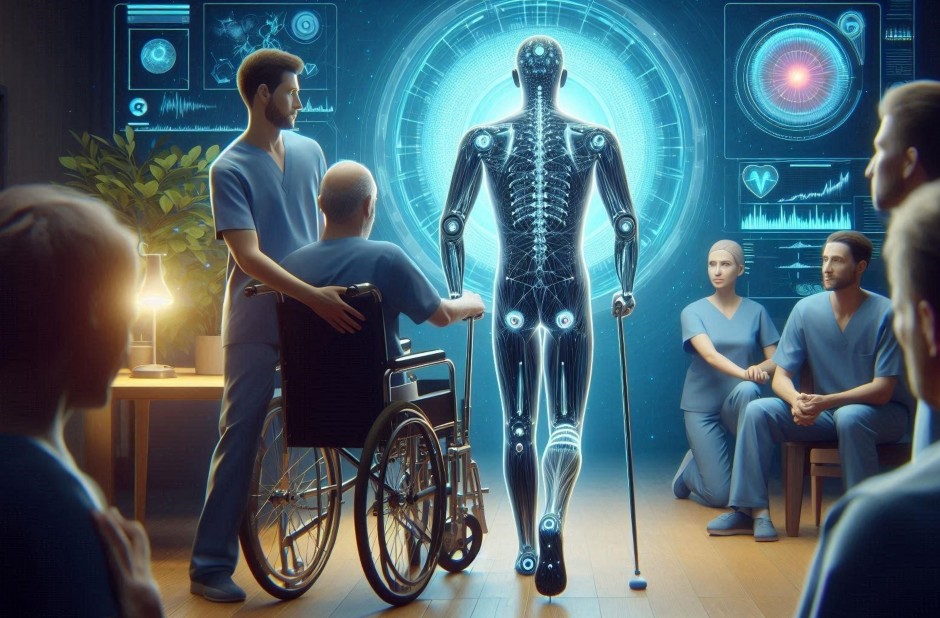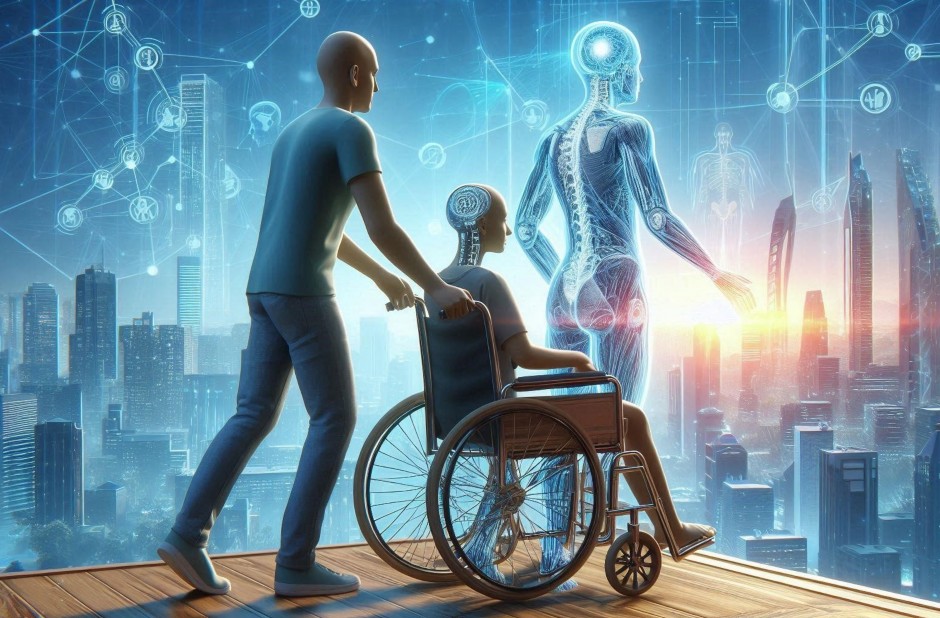In recent years, there has been a significant advancement in the field of Artificial Intelligence (AI) and Augmented Reality (AR). These technologies have become increasingly popular and have the potential to enhance virtual experiences in various fields such as gaming, education, healthcare, and...
AI Helped a Paralyzed Person Walk Again: Revolutionary Medical Breakthrough

In a groundbreaking achievement that once seemed like science fiction, artificial intelligence has enabled paralyzed individuals to walk again through revolutionary brain-spine interface technology. This medical breakthrough represents one of the most significant advances in neurotechnology, offering new hope to millions of people worldwide living with spinal cord injuries.
The Pioneering Case: Gert-Jan Oskam's Journey
The most celebrated case involves Gert-Jan Oskam, a 40-year-old Dutch man who was paralyzed from the waist down following a motorcycle accident in 2011. For over a decade, Oskam dreamed of walking again, trying various methods at home without success. In 2022, researchers at Lausanne University Hospital in Switzerland surgically implanted electronic devices in areas of his brain and spinal cord that control movement.
Using artificial intelligence as a "thought decoder," scientists created what they call a "digital bridge" between Oskam's brain and spine, effectively bypassing his injuries. The AI processes neural signals from his brain region and sends corresponding commands to his spinal cord, translating thoughts into action. Within five to ten minutes of activation, Oskam could control his hips, and remarkably, he can now walk by simply thinking about moving.
How the Technology Works
Brain-Spine Interface Components
The brain-spine interface consists of two main implantable systems working in harmony:
- Brain implant: Records cortical activity from the motor cortex using tiny electrode chips
- Spinal stimulator: Delivers precise electrical stimulation to specific nerve roots in the spinal cord
- AI decoder: Processes brain signals in real-time and translates movement intentions into stimulation patterns
The Role of Artificial Intelligence
The AI component serves as a sophisticated translator between the brain and spinal cord. Machine learning algorithms decode the electrical activity in the cortex, identifying specific patterns associated with intended movements. This information is then converted into precisely timed electrical pulses that stimulate the appropriate spinal nerve roots, enabling natural movement control.
Recent Breakthroughs: China's Rapid Success
In early 2025, Chinese researchers at Fudan University achieved even more remarkable results. Their "triple-integrated brain-spine interface" technology enabled four paralyzed patients to regain leg movement within 24 hours of minimally invasive surgery. The procedure involves implanting two electrode chips, each only 1mm in diameter, into the brain's motor cortex.
Unprecedented Speed of Recovery
The Chinese breakthrough demonstrated extraordinary efficiency:
- Leg movement restored within 24 hours post-surgery
- Independent walking achieved within 2-3 weeks
- Some patients reported restored nerve sensations
- The entire surgical procedure completed in just four hours
Professor Jia Fumin, who led the research team, explained that this technology creates a "neural bypass" that reconnects the brain to paralyzed limbs through the implanted chips. Unlike traditional rehabilitation that may take months or years with limited outcomes, this approach yields immediate results.

Scientific Impact and Recognition
The Swiss team's work with Gert-Jan Oskam was selected as Physics World's 2023 Breakthrough of the Year, recognizing its profound impact on the field of neurotechnology. The brain-spine interface remained reliable and stable for over one year of use, including unsupervised use at home, demonstrating the technology's practical viability.
Beyond Walking: Comprehensive Recovery
The benefits extend beyond simple mobility restoration. Participants have demonstrated the ability to:
- Stand and walk with natural gait patterns
- Climb stairs and navigate complex terrains
- Maintain balance and perform coordinated movements
- Experience partial restoration of sensory function
Most remarkably, some patients have shown signs of natural recovery even when the devices are turned off, suggesting that the technology may promote actual nerve regeneration and repair.
Global Impact and Future Prospects
With an estimated 3.74 million spinal cord injury patients in China alone and 90,000 new cases annually, the potential impact of this technology is enormous. Globally, hundreds of thousands of people could benefit from these advances. In the United States, more than a quarter-million Americans live with some degree of paralysis due to spinal cord damage.
Challenges and Limitations
Despite the promising results, several challenges remain:
- Limited number of available implantable electrodes
- Complexity of decoding diverse motor signals in real-time
- Current limitation to adults capable of intensive rehabilitation
- Need for 5-7 hours of daily therapy post-surgery
The Road Ahead
Research teams worldwide are working to refine and expand this technology. Future developments may include wearable neuroregulation devices for milder cases and multi-modal motion monitoring systems. Clinical trials are expanding, with some companies planning studies involving 70-100 patients in the coming years.
As Professor Jia noted, the ultimate goal is to combine spinal interfaces with 3-5 years of rehabilitation training to enable nerve reconnection and reshaping, potentially freeing patients from device dependence entirely. This could transform paralysis from a permanent condition into a treatable medical challenge.
Conclusion
The successful application of AI in helping paralyzed individuals walk again represents a paradigm shift in neurotechnology and rehabilitation medicine. From Gert-Jan Oskam's inspiring journey to the rapid successes achieved by Chinese researchers, these breakthroughs demonstrate that the impossible can become possible through the convergence of artificial intelligence, neuroscience, and surgical innovation. As this technology continues to evolve and become more accessible, it offers genuine hope for millions of people worldwide who dream of regaining their mobility and independence.



